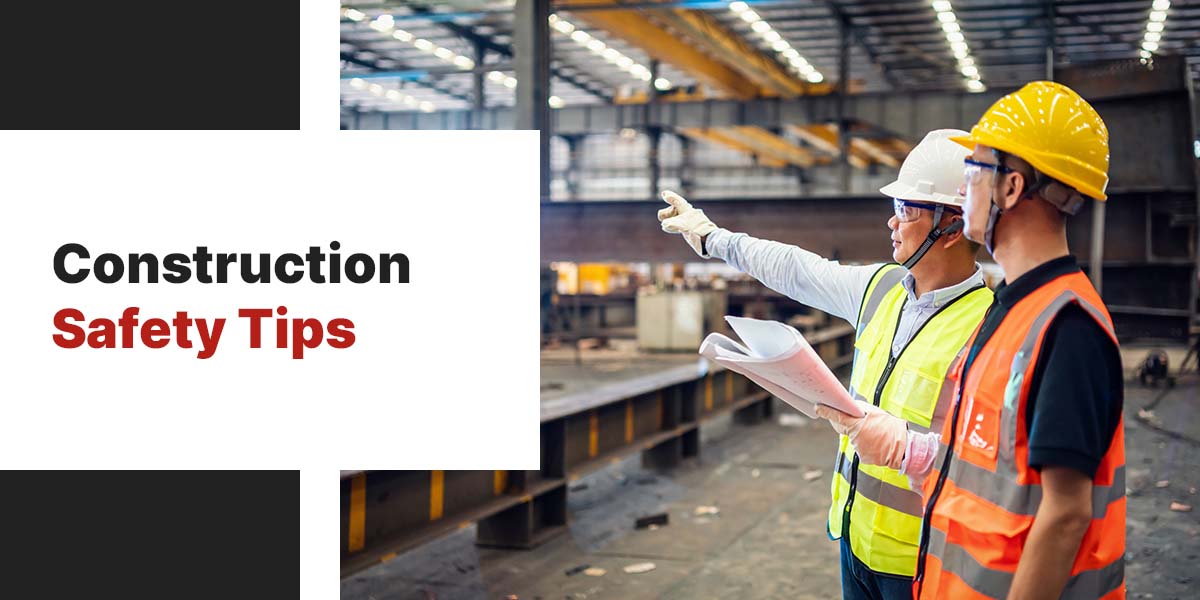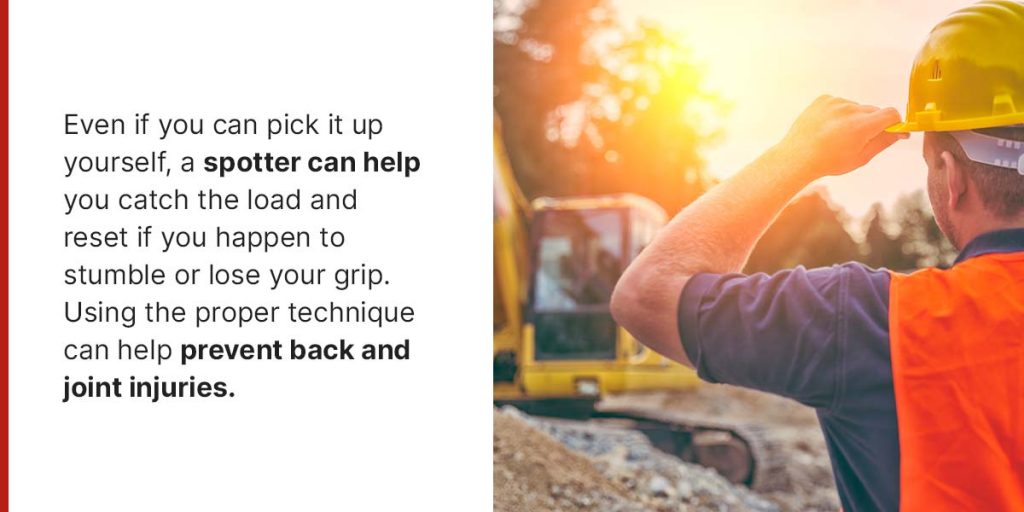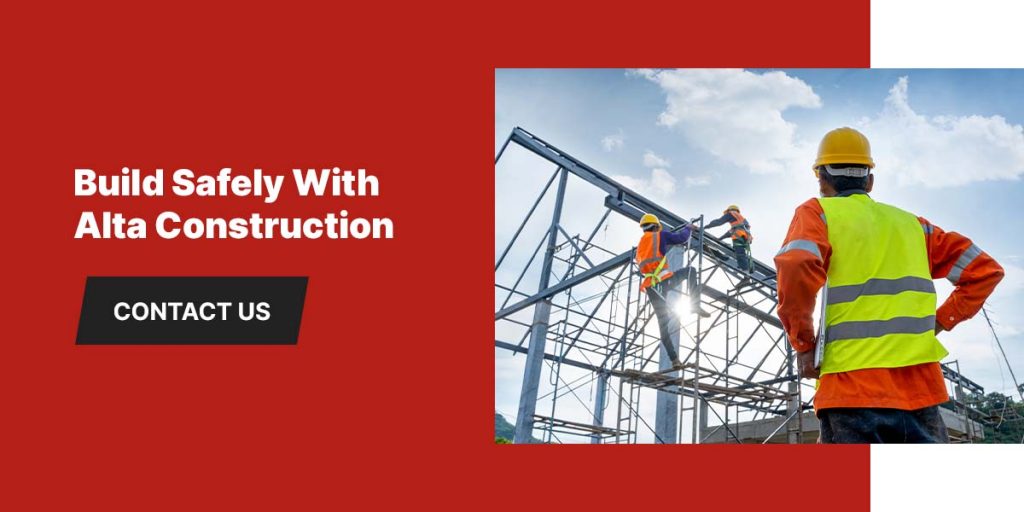
- Wear the Appropriate Clothing
- Provide Fall Protection
- Keep Sites Clean
- Practice Safe Loading and Unloading
- Properly Train Workers
- Handle Equipment Appropriately
- Identify Potential Hazards
- Provide Proper Signage
Wear the Appropriate Clothing
Most construction sites require long-sleeved shirts and pants. Your clothes should fit snugly, as loose clothing increases your risk of getting caught in machinery.
The law also requires that employees have access to personal protective equipment (PPE) appropriate for their jobs, such as face shields, hard hats and gloves. Employers should provide this equipment to their employees.
Provide Fall Protection
Falls are the leading cause of death on construction sites, according to reports from the Occupational Safety and Health Administration (OSHA). All employees working above 4 feet should have the proper fall protection equipment available to them. Additionally, employers should provide appropriate training to all employees exposed to fall hazards.
Fall protection equipment should comply with these guidelines:
- Guardrails should be 39-45 inches above the walking/working level and should be able to withstand at least 200 pounds of force in any direction.
- Midrails, mesh or screens should be installed between the guardrails and platform if there is no wall at least 21 inches high behind the railing. Additionally, midrails should withstand 150 pounds of force applied in any direction.
- Safety nets should be installed a maximum of 30 feet below the working surface and must withstand 400 pounds of force. Site managers should perform drop tests using sandbags at least once every six months.
- Lifelines should have a minimum breaking point of 5,000 pounds per worker. So if two workers are attached to the same lifeline, it should be able to handle 10,000 pounds of force before breaking.
Before using any fall protection equipment, you should make sure it’s in working condition. Look for tears or breaks and check that you’re able to fasten all buckles and latches securely. If something is wrong, alert your site manager.
Keep Sites Clean
Keeping your construction site clean and free of clutter eliminates risks such as trip and fire hazards. Your work area should have the appropriate receptacles for each type of waste. For example, garbage bins and containers for flammable or dangerous materials should have covers. Place empty waste containers at regular intervals to prevent them from building up and creating a safety hazard.
To ensure the safe transport of materials, remove debris like scrap lumber, especially if it has protruding nails or sharp edges, from any passageways, staircases or work areas. Additionally, keep storage areas clear of materials that could pose a hazard or harbor pests, like food waste or other organic debris.
Practice Safe Loading and Unloading

Just like in the gym, you should have someone with you when lifting heavy objects at work. Even if you can pick it up yourself, a spotter can help you catch the load and reset if you happen to stumble or lose your grip.
Using the proper technique can help prevent back and joint injuries. Here’s the appropriate technique for lifting and carrying heavy objects:
- Plan the lift: Figure out the weight and destination of the object you need to lift and make sure the path is clear. Have your spotter ready and an action plan in place.
- Warm up: Even a few minutes of dynamic stretching can significantly lower your risk of injury. Jog in place or to get your heart rate up, then perform some gentle stretches.
- Lift: Get as close to the object as you can. Keeping your back straight and head up, squat down with your knees over your toes and grip the object. Push upwards with your legs to pick the object up.
- Carry: Make sure you have a good grip on the object and carry it to its destination by taking small steps. When you need to change direction, lead with your feet to avoid twisting your upper body.
- Set it down: Making sure your hands are out of the way, set the object down. Keep your spine neutral with your core engaged. Knees should still be in line with your toes.
Properly Train Workers
All workers should receive proper training for their industry. Providing this training both minimizes the risk of construction injuries and prepares employees for emergencies when they arise. Job site safety training includes:
General training: New hires must receive training before beginning their jobs or handling any equipment. OSHA encourages hands-on training whenever possible to ensure workers are comfortable. For example, forklift operators should learn both by studying written materials and by physically using a forklift.
- Refresher training: Employers should provide refresher training on a regular basis to remind employees of important procedures and safety measures. Similarly, workers should receive additional training whenever industry or company policies change.
- Emergency training: All employees should learn emergency and evacuation procedures. This training should occur upon implementing an emergency plan, any time a process changes and any time an employee’s responsibilities change. For companies with more than 10 employees, a hard copy of all emergency procedures taught in training should be readily accessible.
Handle Equipment Appropriately
OSHA states that only employees who have completed the necessary training should operate equipment and only use it for its intended purposes.
Inspect all equipment and machinery before each use, looking for any signs of wear. If it’s damaged or not working properly, stop using it and notify your site manager so they can either fix it or provide a replacement.
Identify Potential Hazards
At the start of each day, inspect your site for any potential risks or hazards. These can include any of the following:
- Leaks of dangerous materials
- Faulty equipment
- Cluttered work surfaces
- The presence of pests like rats or termites
If you find a hazard, notify your site manager and other team members so everyone is aware. Then, take the proper steps to fix or eliminate the hazard.
Provide Proper Signage
OSHA standards require that all job sites have proper signage, including both hazard signs and directional non-hazard signs. Signs should appear anywhere that makes sense, including where conditions change. For example, a “Danger: Hard Hat Area” sign should appear before the worker reaches the point where they would need to put on their hard hat.
Important text like “Danger” or “Caution” should be clearly legible from 5 feet away. Similarly, signs should follow OSHA standards for size and color, which are universal across all sites. By visually alerting employees to unsafe conditions, you can help prevent injuries.
Build Safely With Alta Construction
At Alta Construction, we help clients nationwide achieve their construction goals seamlessly. As a full-service construction firm, we value safety and bring that, along with our expertise and personalized services, to every project. We work with a wide range of clients and would be happy to help you with your construction needs. Contact us online for more information.


